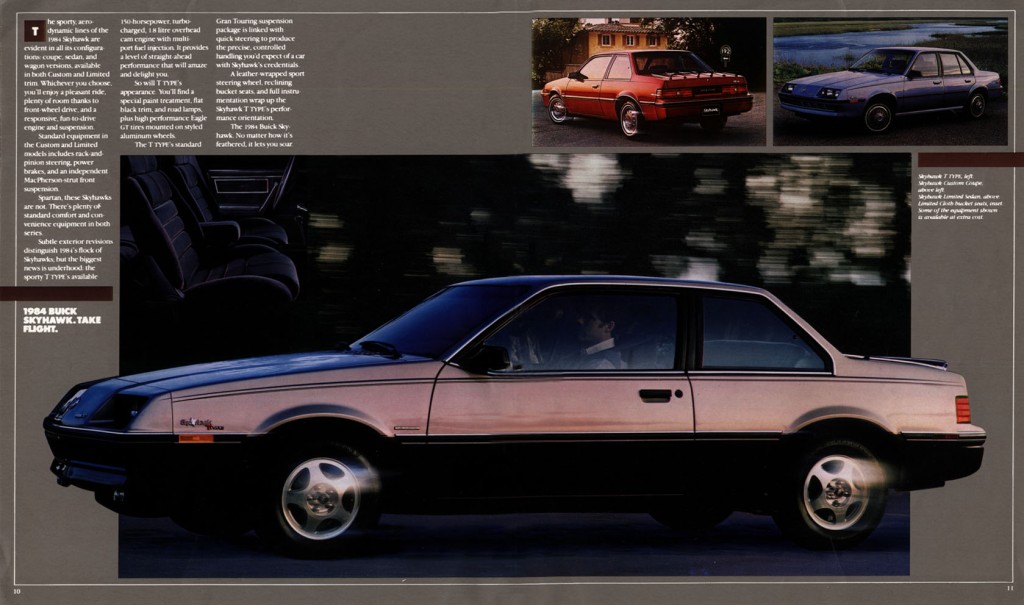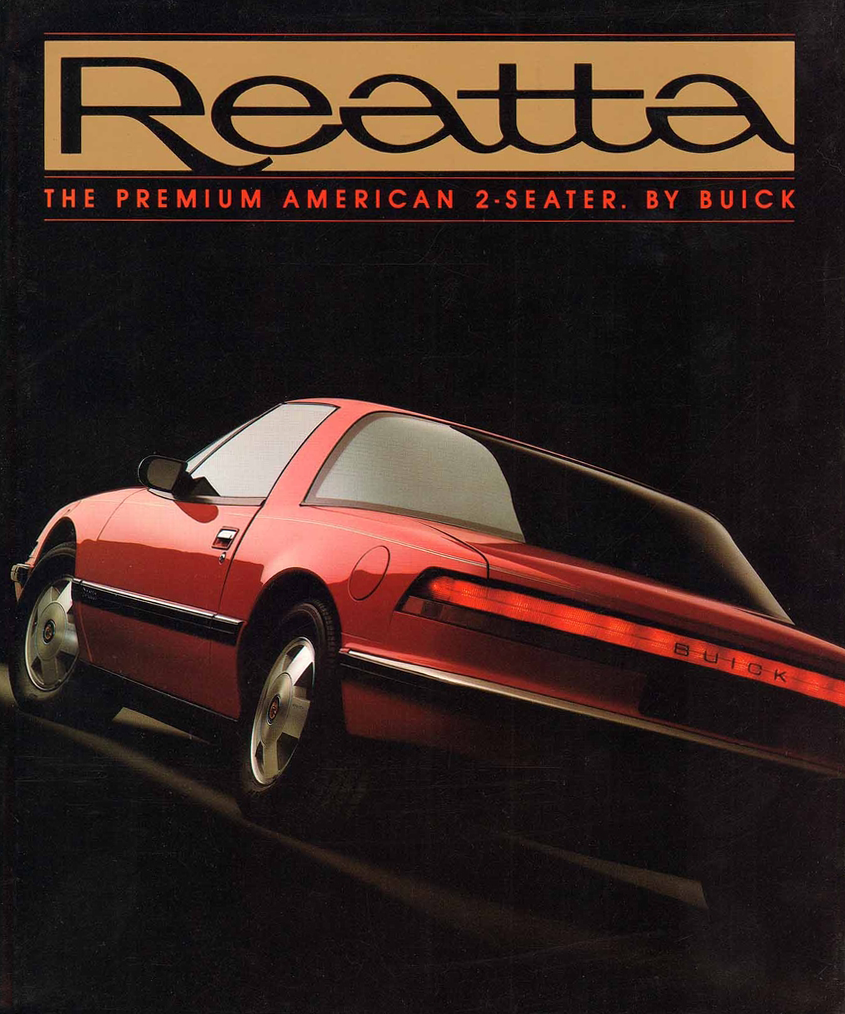“Take flight.”
1984 was the third year for Buick’s version of the J-car. It also marked the Skyhawk’s peak sales year, with Buick producing 75,760 coupes, 45,648 sedans, and 13,668 station wagons.
The Skyhawk’s standard powertrain was an LQ5 86 bhp 2.0 liter/121 ci inline four with throttle-body fuel injection paired with a four-speed manual. An LH8 84 bhp 1.8 liter inline four with throttle-body fuel injection was $50, but required an upgrade to a five-speed manual ($75). Both engines were available with a three-speed automatic ($395). An LA5 turbocharged version of the 1.8 liter engine with 150 bhp was only available with the T TYPE coupe.
Performance wasn’t exactly scintillating, but Skyhawk coupe’s relatively low 2,316-pound weight did help. 0-60 times with the 1.8 liter/five-speed combination were likely in the 12 second range. Fuel economy with the same powertrain was rated at 29 city/46 highway by the day’s standards—today’s measures give a far less impressive 23/33. With a 13.5-gallon gas tank, a Skyhawk owner could expect a range of 340 to 455 miles with a 10% fuel reserve.
Standard exterior and mechanical equipment on the $7,133 base Skyhawk coupe (designated as Custom) included manual rack-and-pinion steering, power front disc/rear drum brakes, and P175/80R13 blackwall tires on 13-inch wheels with Deluxe wheel covers. Inside, full carpeting, reclining front bucket seats, a full-length operating console, a Custom steering wheel, and an AM radio were included.
Moving up to the $7,641 Limited (about $22,400 in 2022 dollars and slightly less than a 2022 Buick Encore SUV costs) added dual horns, an acoustic package, a Limited steering wheel, and instrument gauges, along with cloth-covered seats and door panels.
Exterior and mechanical options for the Skyhawk coupe included tinted glass ($95), tungsten-halogen headlamps ($22), and styled aluminum wheels ($229). Inside, Electronic Touch Climate Control air conditioning ($780), manual air conditioning ($630), power windows ($185), and a series of stereo choices ranging up to an electronic tuning AM/FM stereo radio with cassette tape and graphic equalizer ($505) were all available.
The View From 2022
I haven’t seen a second-generation Skyhawk in person in many years. Buick made them through the 1989 model year, by which time sales numbers had dropped to a mere fraction of those in 1984.
Skyhawks are sometimes available in the Hemmings Motor News classifieds and at online auctions such as Bring a Trailer that cater to the eighties car market. As I write this blog entry in September 2022, Hemmings has a 1986 White Skyhawk T-Type hatchback with gray lower accents, silver/black cloth bucket seats, and 10,000 miles for sale for $16,000.
Make mine Silver Metallic, please.










/n_1983%20Buick%20T%20Type%20(Cdn)-04-05.jpg)


